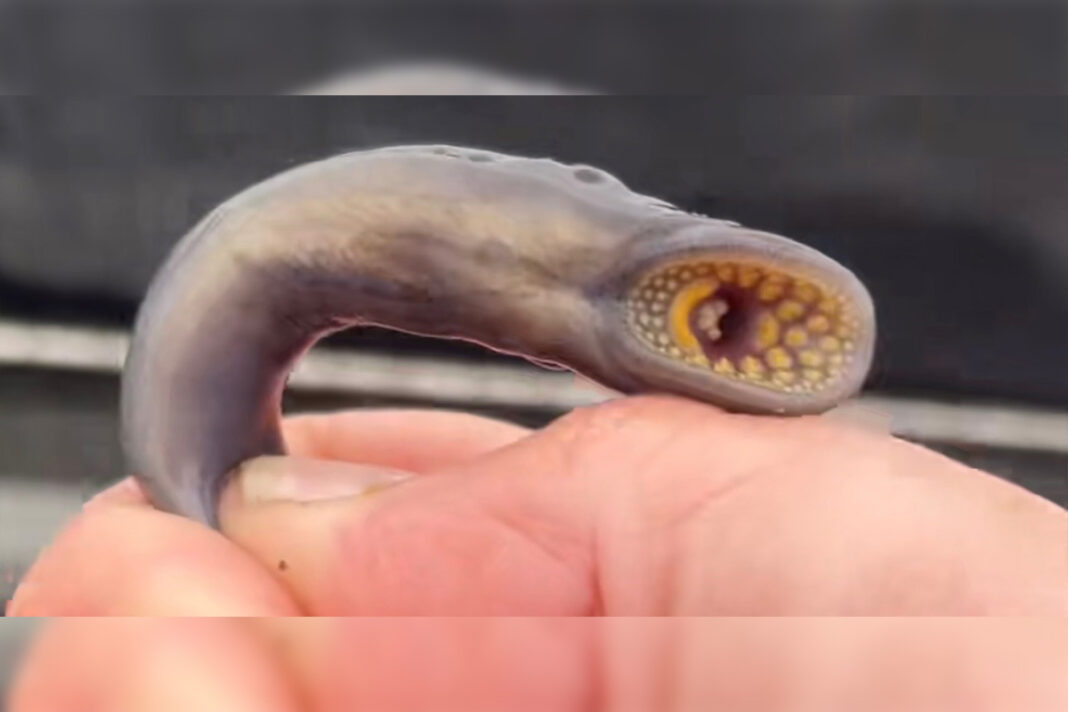LAKE HURON—An ancient predator, the sea lamprey, has resurfaced as a growing threat in the Great Lakes, sparking alarm among scientists and fishermen alike. This eel-like invader, unchanged for over 300 million years and a survivor of multiple mass extinctions, is once again leaving its mark—this time in the form of a troubling resurgence following pandemic disruptions.
The Great Lakes Fishery Commission has reported a sharp increase in sea lamprey populations across all five lakes, a direct consequence of paused control measures during the COVID-19 pandemic. Though efforts have resumed, experts warn it will take time to reverse the surge.
“Control efforts in 2024 returned to pre-pandemic levels, but elevated and variable sea lamprey populations should be expected over the next year or two before we see declines,” said Ethan Baker, chair of the commission.
Sea lamprey first infiltrated the Great Lakes in the early 20th century via shipping canals, wreaking havoc on native fish populations. By the 1950s, the invader had nearly collapsed the region’s commercial fishing industry, particularly decimating lake trout populations.
Unlike in their native Atlantic Ocean habitat, where they coexist with hosts as parasites, sea lamprey in the Great Lakes act as ruthless predators. Each lamprey can kill up to 40 pounds of fish during its 12-month feeding period. Using its suction-cup-like mouth and razor-sharp teeth, the lamprey latches onto fish, rasping through scales and feeding on blood and body fluids.
“The flesh in the fish turns white because all the blood has been removed,” explained Drew Purvis, a vessel captain and co-owner of Purvis Fisheries on Lake Huron. “They wiped out lake trout once before, and with their numbers rising, it could happen again if we’re not careful.”
The impact of sea lamprey on the Great Lakes’ ecosystem and fishing industry is staggering. Only one in seven fish survives an attack. While their preferred prey includes lake trout, they also target salmon, brown trout and even lake sturgeon—species crucial to the lakes’ biodiversity and economy.
Rebecca D’Orazio, an Aquatic Invasive Species Specialist at the Invasive Species Centre in Sault Ste. Marie, emphasized the lamprey’s deadly efficiency. “In their native range, they rarely kill their hosts, but here, they act as predators. Their ability to devastate fish populations is unparalleled.”
Despite the grim outlook, there are glimmers of hope. Control measures, which had been paused during the pandemic, are now fully reinstated. The Great Lakes Fishery Commission and Invasive Species Centre report early signs of success, suggesting lamprey populations may soon stabilize.
Efforts include targeted trapping and lampricides, chemicals used to kill lamprey larvae in streams. These methods have historically helped curb populations but require consistent application to remain effective.
How to identify the invasive sea
lamprey
Sea lamprey are unmistakable. Adults range from 30 to 76 cm long, with leathery, scaleless skin in shades of grey or brown. Their mouths feature rings of sharp teeth and a raspy tongue, used to drain fish of their life force.
Larvae, which live buried in stream beds for years before transforming into parasites, resemble blind, wormlike creatures. These early stages are the focus of most control efforts.
Fishermen, scientists, and policymakers are keeping a close eye on the sea lamprey resurgence. As control programs intensify, experts urge continued vigilance and collaboration to ensure the sea lamprey remains an unsettling but manageable part of Great Lakes history—rather than a harbinger of ecological collapse.





